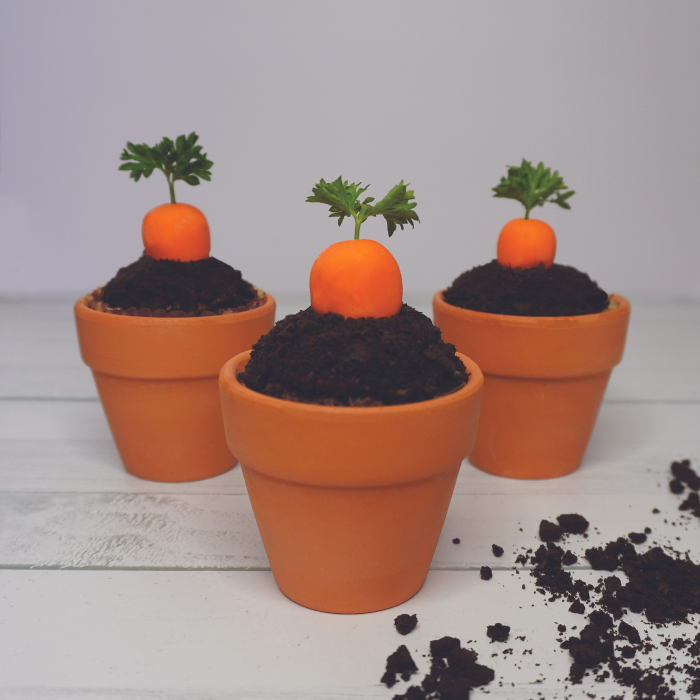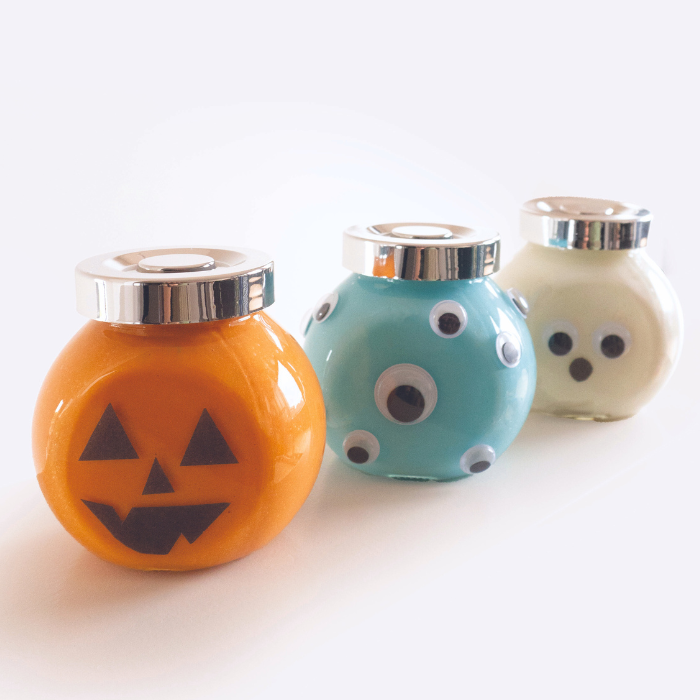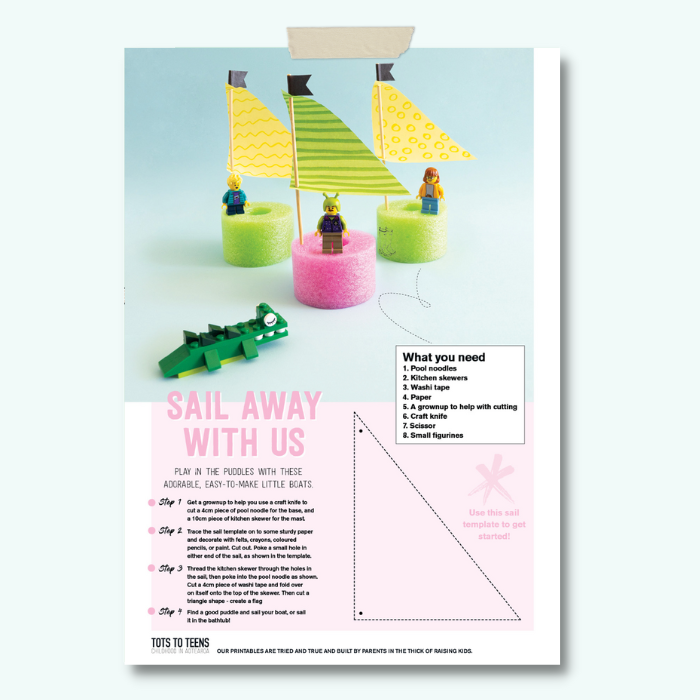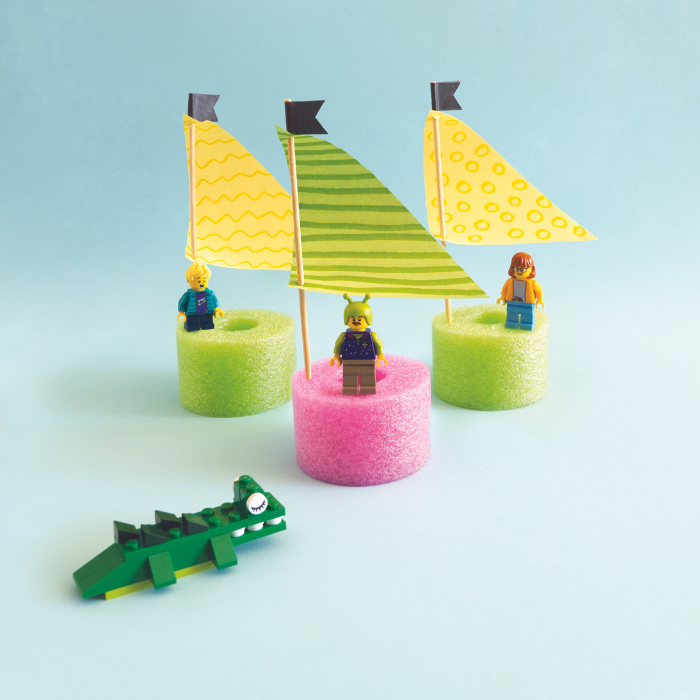
Encouraging your child’s creativity not only helps boost their self-esteem as they grow to become well-rounded, talented individuals, but may also be the key to unlocking academic success.
The walls and fridge at our house are covered in art created by a passionate pint-sized artist. Kids seem compelled to express themselves creatively, with works of art flowing out of early education centres at alarming rates. Once they get to school, as parents, we often focus more on our child’s reading and writing skills, but the latest research in education suggests at least some of our energy should go into encouraging our kids in their artistic enthusiasm.
Smart art
Kids love art and, according to the research, so should we. It does amazing things for them! Researchers have found that young children who have been encouraged in art do better later in school. They have stronger visual thinking skills and their reading is improved. In fact, experts think that many academic areas may be improved by art. They also found that schools which involve children in a lot of art activities have less discipline problems and less fatigued students. Art trains children’s brains and helps with emotional well-being, self-esteem and emotional conflicts.
Boost their self-esteem
Making self portraits can help kids develop a positive self image. Have your child examine their face in a mirror. Get them to pull faces and look sad, happy or mad, etc. Talk about the changes such as: Look, your eyebrows go up when you do that! Help them draw their face, focusing on really looking at each part before they draw it. Ask direct questions such as: Where are your eyes? What shape is your top lip?
Listen with your eyes
Art isn’t just about learning to draw, paint or sculpt, it’s also about learning to see, hear and express. Having a fun discussion about the art before your child begins will help them expand on their artistic skills, but will also extend vocabulary, observation skills and their emotional intelligence. Ask some simple questions about their art. If they are creating a painting, talk about what might be in the background. If they are drawing their favourite movie characters, pause a scene and talk about what they can see. Kids are very observant but sometimes have trouble transferring what they see onto paper. Help them add extra elements into their pictures by using prompts such as: Do you think Dora looks happy? What colour are her eyes?
Help your child see, hear and express artistically
Visit an art gallery together and talk about what you both like or dislike. Compare different pieces of art, talk about how they were made and why, and maybe even find one type you’d like to try at home. Younger children could be asked: What is your favourite bit and why? Which painting/sculpture don’t you like? Older children could be asked: What mood is this painting? What do you think the artist was feeling? What did they want us to think about? Sit outside and draw what you hear. Make up symbols together that represent the sounds. A bird tweeting could be tiny yellow swirls, a car horn could be a big red splat. You could even sing what you’ve drawn!
Create some abstract art based on a feeling. Pick a feeling and choose colours that match it. Talk about what kind of shapes that feeling might look like. Would a happy picture be big flowers and circles? Would an angry picture be sharp and bold?
Music to paint by
Put on various styles of music and encourage your kids to paint to it. We call this ‘dancing on paper’ at my house. Instrumental music usually works best. Some kids get right into this but if they need help getting started, talk about the mood of the piece with them. Would this music make a sad, happy, fast or floaty picture? What kind of colours would a floaty picture need? Get them to try dancing with their brush in the air or moving around.
Try a big music painting
If they can stand up to paint, they can move their whole bodies while they create. Tape a very large piece of paper to a wall or window. Rolls of newsprint are great to buy for this sort of art. Put on some bold classical music and let them go for it!
Kids love art and, according to the research, so should we. It does amazing things for them! Researchers have found that young children who have been encouraged in art do better later in school.
Getting creative
- Encourage colouring outside the lines for a change. Using colouring books all the time can inhibit creativity, so try to offer blank paper as well as pictures in art time.
- Have them colour a picture using only two contrasting colours, or just different shades of blue.
- Older children can try drawing just the shadows of an object or follow a line around the room without lifting their pen from the paper.
- Drawing what’s on the horizon can encourage older kids to look closely at lines and shapes, rather than drawing what they think they see.
- Keep it varied. Remember art can be sculpture, screenprinting, designing a t-shirt, wood carving, sand gardens, illustrating a story, making a dvd cover, flower arranging, rock painting and comic book making. Visual art is excitingly broad, so expose them to as many different forms as you can find.
- For inspiration, make use of art galleries with onsite artists. Kids love to chat and watch an artist at work.
AGES & STAGES
Nature has been inspiring artists since the beginning. Even the most abstract of modern artists often seek the outdoors to fuel their creativity.
Try these arty outdoor activities to inspire your child:
Any age:
Sit outdoors and take in the view around you. Teach your kids to notice more by talking about what you see together. Point out colours, shapes and textures. With older children, talk about where the light falls, and discuss perspective (i.e., things looking bigger when close and smaller when far away).
Age 2+:
Make some Found Art. Collect up leaves, sticks, pebbles, etc and create a collage. You will need some strong glue or a glue gun for heavier items and some sturdy paper or card as a backing. Alternatively, they could make a sculpture or sand garden from their found objects and take a photo.
Age 3+:
Give your child a digital camera, head to the backyard, beach or gardens and start clicking. Try the macro setting to examine the small details of a flower, bug or other objects around you. (Looking at things in a different way aids creativity.)
Age 5+:
Make a Scene Viewer. Cut out a cardboard rectangle, then cut another smaller rectangle inside to make a frame. Kids can hold it at arm’s length to frame up a scene, then draw that scene.
By Kelly Eden-Calcott
more craft ideas from tots to teens:
How To Explore Nature Creatively








